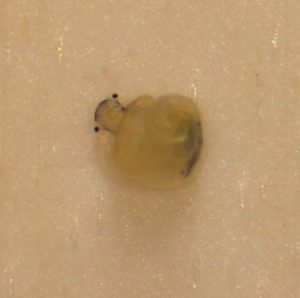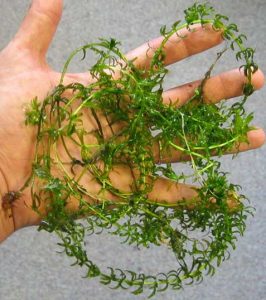Investigating the Effects of Aquatic Herbicides on Freshwater Mollusk Survival and Reproduction
Invasive aquatic plants, such as hydrilla (Hydrilla verticillata), threaten native species in many ways, ultimately degrading overall habitat quality and quantity. Aquatic herbicides are often selected as a control and management strategy, but few peer-reviewed studies address their effects on non-target organisms, especially native freshwater mussels and snails. The aim of our studies was to assess the effects of two herbicides commonly used in the control of invasive aquatic plants on the survival and reproduction of freshwater mussels and snails. This research was driven by an immediate need of natural resource managers to act on recent invasions of hydrilla into rare mollusk habitats. We conducted laboratory experiments to assess survival of larval, juvenile, and adult mussels, and multiple life stages of a rare southeastern snail – juveniles, adults, and egg hatching success.
 We found that freshwater mollusks are among the most sensitive organisms to such herbicides, with median lethal concentrations lower than most other taxa. However, in general, their sensitivities were well above the concentrations typically prescribed invasive plant control. More research is needed to understand long term effects of some herbicides, but results thus far suggest that aquatic herbicides pose less risk to freshwater mollusks than does hydrilla. Full results of these studies are available in The Journal of Freshwater Ecology and Freshwater Mollusk Biology and Conservation.
We found that freshwater mollusks are among the most sensitive organisms to such herbicides, with median lethal concentrations lower than most other taxa. However, in general, their sensitivities were well above the concentrations typically prescribed invasive plant control. More research is needed to understand long term effects of some herbicides, but results thus far suggest that aquatic herbicides pose less risk to freshwater mollusks than does hydrilla. Full results of these studies are available in The Journal of Freshwater Ecology and Freshwater Mollusk Biology and Conservation.
